Data centre efficiency is crucial for maximising performance while minimising costs, and at EziBlank, we specialise in providing innovative air-flow management solutions tailored for your specific needs. Our cutting-edge blanking panels are designed to quickly and easily optimise your infrastructure, ensuring balanced airflow and enhanced cooling performance. By implementing EziBlank solutions, you not only safeguard your vital core assets but also significantly reduce power consumption and operational expenses. Discover how our expertise can transform your data centre into a powerhouse of efficiency today!
Why Are Data Centers Important?
In an increasingly connected world, data centres have become the unsung heroes of our digital lives, powering everything from online shopping to streaming services and complex AI operations. These critical facilities store, process, and distribute vast amounts of data, ensuring that businesses and individuals can access the digital tools and information they need in real-time. The importance of data centres extends beyond mere storage; they are integral to the functioning of our digital economy, providing the backbone for everything from everyday internet usage to the advanced computing required for innovation and growth.
Read More
The Role of Blanking Panels in Energy Efficiency
Blanking panels may seem like a minor component within data centres, but their role in enhancing energy efficiency is substantial. By effectively sealing unused spaces in server racks, these panels prevent the mixing of hot and cold air, allowing cooling systems to operate more efficiently. This targeted airflow management reduces the overall energy consumption required to maintain optimal temperatures, leading to significant cost savings and a lower carbon footprint. Incorporating blanking panels into data centre infrastructure is a simple yet powerful step towards achieving greater energy efficiency and sustainability.
Read More
Elevate Data Center Performance with Blanking Panels
Enhancing the performance of data centres often hinges on small yet impactful innovations, such as the strategic use of blanking panels. These panels are designed to cover unused spaces in server racks, preventing hot air from recirculating and ensuring that cooling systems work at peak efficiency. By improving airflow management, blanking panels help maintain optimal operating conditions for servers, reducing the risk of overheating and boosting overall system performance. For data centres striving to maximise efficiency and reliability, blanking panels offer a straightforward and effective solution.
Read More
How Do I Reduce Data Center Operating Costs?
Reducing operating costs in data centres is a key priority for businesses seeking to maximise efficiency while maintaining high performance. One of the most effective strategies involves optimising cooling systems, as cooling typically accounts for a significant portion of energy expenses. Implementing solutions like blanking panels to manage airflow and prevent hot air recirculation can drastically reduce the energy needed for cooling. Additionally, adopting energy-efficient hardware and monitoring systems to track and adjust power usage can further drive down costs. By focusing on these areas, data centres can achieve substantial cost savings while maintaining optimal operational standards.
Read More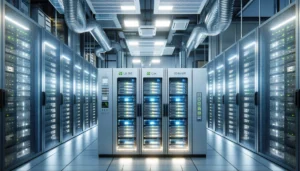
Are Data Centers Noisy?
Data centres are often hubs of constant activity, and this comes with a significant level of noise generated by the multitude of servers, cooling systems, and other equipment running 24/7. The noise primarily stems from the cooling fans and HVAC systems working to maintain optimal temperatures, as well as the operational hum of the servers themselves. While this noise is a natural byproduct of keeping critical infrastructure cool and functional, it can be quite disruptive, especially in areas where noise levels are a concern. Understanding the sources and implications of data centre noise is essential for designing facilities that balance performance with a comfortable working environment.
Read More
Innovative Solutions for Data Center Cooling
Effective cooling solutions are vital for the smooth operation of data centres, where temperature control is critical to maintaining equipment reliability and performance. Various strategies are employed to manage heat, from advanced liquid cooling systems that directly cool high-density servers to traditional air cooling enhanced by precision airflow management. The use of blanking panels is a simple yet powerful method to improve air circulation, preventing hot spots and reducing the workload on cooling systems. By implementing a combination of these cooling technologies, data centres can optimise their energy efficiency, lower operational costs, and ensure that their infrastructure remains robust and reliable.
Read More
Best Practices for Data Center Scalability
Scalability is a cornerstone of modern data centre management, ensuring that facilities can grow and adapt to meet increasing demands without compromising performance. Best practices for achieving scalability include modular design, which allows for the incremental addition of capacity, and the implementation of efficient cooling solutions that can be scaled alongside the infrastructure. The use of blanking panels to manage airflow and reduce energy consumption is another key strategy, as it supports both current and future expansion needs. By focusing on these scalable solutions, data centres can remain agile and responsive to the ever-evolving technological landscape.
Read More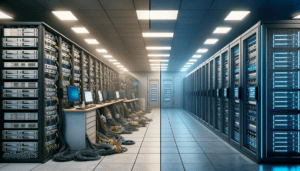
How Many Data Centres in Australia
Australia is home to a rapidly growing number of data centres, driven by the increasing demand for digital services and cloud computing. As of recent years, there are over 200 data centres spread across the country, with the majority located in major cities like Sydney, Melbourne, and Brisbane. These facilities range from small enterprise data centres to large-scale hyperscale centres operated by global tech giants. The growth of data centres in Australia reflects the country's strategic importance in the Asia-Pacific region as a hub for digital infrastructure, supporting everything from local businesses to international cloud services.
Read More
What are data centre floor tiles
Data centre floor tiles are an essential component of the infrastructure that helps manage airflow and support the weight of heavy equipment. Typically used in raised floor systems, these tiles are designed to allow for the efficient distribution of cool air from below the floor to the servers above. Perforated or vented tiles are particularly common, as they enable controlled airflow to specific areas, ensuring that cooling is directed where it's most needed. In addition to their functional role, these tiles must also be durable enough to withstand the constant load and movement of heavy server racks, making them a critical element in maintaining the overall efficiency and safety of a data centre.
Read More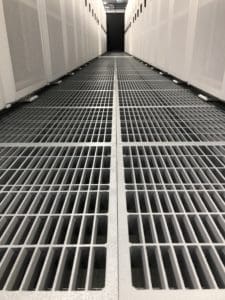
The Importance of Energy Efficiency in Data Centres
Energy efficiency is a crucial factor in the operation of data centres, as these facilities consume vast amounts of power to keep servers running and maintain optimal cooling conditions. Improving energy efficiency not only reduces operational costs but also lessens the environmental impact of data centres, aligning with global sustainability goals. Strategies such as implementing advanced cooling systems, utilising renewable energy sources, and optimising airflow management with tools like blanking panels are key to achieving higher energy efficiency. By focusing on these areas, data centres can enhance performance while contributing to a more sustainable future.
Read More
Choosing the Right Blanking Panels for Your Data Centre
Selecting the appropriate blanking panels for your data centre is a crucial step in optimising airflow and improving overall energy efficiency. Blanking panels, which fill unused spaces in server racks, are available in various sizes and materials to suit different configurations and needs. Choosing the right panels involves considering factors such as rack dimensions, the type of cooling system in place, and the specific airflow requirements of your equipment. Properly installed blanking panels help prevent hot air recirculation, ensuring that cooling systems operate more effectively, thereby reducing energy consumption and enhancing the performance and longevity of your data centre’s infrastructure.
Read More
What Is A Server Rack Used For?
A server rack is a critical component in the organisation and management of IT infrastructure within data centres. These racks are designed to house servers, networking equipment, and other hardware in a structured and efficient manner, allowing for optimal use of space and easy access for maintenance and upgrades. By keeping servers and equipment neatly arranged, server racks facilitate effective cooling and airflow, which is essential for preventing overheating and ensuring reliable operation. Additionally, server racks help in cable management and provide a level of physical security, making them indispensable for maintaining an organised and efficient data centre environment.
Read More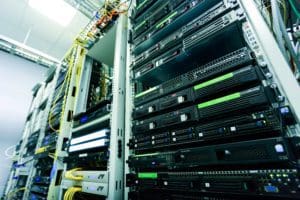
How Are Server Racks Measured?
Server racks are measured primarily in terms of their height, which is expressed in units known as "rack units" or "U." Each rack unit corresponds to 1.75 inches (44.45 mm) of vertical space, and standard server racks typically range from 42U to 48U in height, though smaller and larger sizes are available. The width and depth of server racks are also important, with most racks being 19 inches wide to accommodate standard equipment sizes, while depth can vary to support different types of hardware. Understanding these measurements is crucial for ensuring that all servers, networking devices, and other components fit properly within the rack, allowing for efficient use of space and optimal cooling.
Read More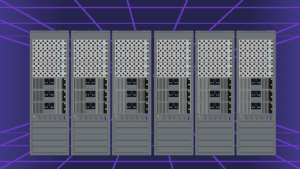
Blanking Panels: The Importance of them in Server Racks
Blanking panels play a vital role in maintaining the efficiency and effectiveness of data centre cooling systems. By filling the empty spaces in server racks, these panels prevent the mixing of hot and cold air, ensuring that the cool air is directed where it is needed most—towards the active equipment. This targeted airflow management helps to maintain optimal operating temperatures, reduces the strain on cooling systems, and ultimately leads to lower energy consumption. The use of blanking panels not only improves the performance and longevity of data centre equipment but also contributes to significant cost savings and a more sustainable operation.
Read More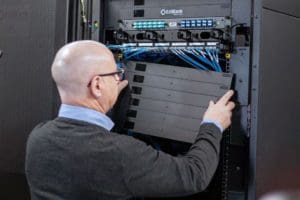
Is It Dangerous to Live Near a Data Center?
Living near a data centre is generally not considered dangerous, but there are some factors to be aware of. Data centres typically operate with high levels of security and strict environmental controls, which minimise any risks to nearby residents. However, concerns may arise around noise pollution from cooling systems and backup generators, as well as the potential for increased traffic and construction activity. Additionally, while data centres consume significant amounts of energy, modern facilities often employ advanced technologies to reduce their environmental impact, including energy-efficient cooling systems and renewable energy sources. Overall, the presence of a data centre in a neighbourhood is unlikely to pose significant health or safety risks.
Read More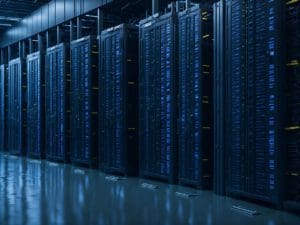
How much does it cost to build a data center?
The cost of building a data centre can vary widely depending on factors such as location, size, design specifications, and the level of technology incorporated. On average, constructing a small to mid-sized data centre can range from several million to tens of millions of dollars. Larger, hyperscale data centres, which are designed to support massive computing needs, can cost hundreds of millions to over a billion dollars. These costs include land acquisition, construction, electrical and cooling infrastructure, security systems, and the installation of servers and networking equipment. Additionally, ongoing operational costs such as energy, maintenance, and staffing must be factored into the total investment, making data centres a significant financial commitment for any organisation.
Read More
Everything you need to know about data center power
Power is the lifeblood of any data centre, underpinning the operation of servers, cooling systems, and networking equipment. Ensuring a reliable and continuous power supply is critical, as even a brief outage can lead to significant disruptions. Data centres typically rely on a combination of grid electricity, uninterruptible power supplies (UPS), and backup generators to maintain operations during power failures. Power distribution within the facility must be carefully managed to ensure that all equipment receives the necessary voltage and current, while also allowing for redundancy to prevent failures. Additionally, the efficiency of power usage is a key concern, with modern data centres adopting technologies like power usage effectiveness (PUE) metrics to optimise energy consumption and reduce costs. Understanding these aspects of data centre power is essential for maintaining high performance and reliability in a facility.
Read More
Is a green data center good for business?
A green data centre is not only beneficial for the environment but also offers significant advantages for businesses. By focusing on energy efficiency, renewable energy sources, and sustainable practices, green data centres help reduce operational costs through lower energy consumption and improved efficiency. This reduction in costs can translate into higher profitability over time. Additionally, operating a green data centre enhances a company’s reputation by demonstrating a commitment to sustainability, which can attract environmentally conscious customers and partners. Moreover, as regulations around carbon emissions tighten, having a green data centre can ensure compliance and reduce the risk of penalties. Overall, investing in a green data centre is a smart business decision that aligns economic performance with environmental responsibility.
Read More
